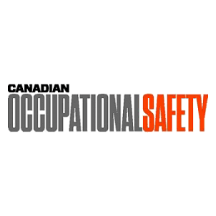The Abbotsford Police Department in British Columbia has become the first police force in Canada to deploy the BolaWrap, a non-lethal restraint tool. The department aims to reduce injuries during tense or unpredictable situations with this new device.
Constable Alex Odintsov, who is part of the police training section, explained the device's purpose. "[Like when] someone is actively walking away from the officers … and there's grounds to believe that they need to be stopped," he said. The BolaWrap resembles a large yellow remote control and fires a lasso-like cord that wraps around a person's limbs or torso from a distance.
According to the Abbotsford Police, the BolaWrap is designed to temporarily restrain individuals without inflicting pain. The device's cassette contains the cord that entangles a person's arms or legs during police encounters. Odintsov noted, "It provides another option for officers when intervening with potentially volatile subjects, while at the same time decreasing the injury potential to the subject that is often associated with other tools."
The department conducted a 10-month field trial of the BolaWrap, submitting data to a provincial panel that approved its use in British Columbia. During the trial, the device was deployed more than a dozen times, resulting in no injuries. "The result was there were no injuries to the subject, and ultimately it aided in apprehension or the arrest," Odintsov stated.
The BolaWrap is designed to startle rather than incapacitate. It produces a loud bang when deployed, which can give officers a reactionary advantage. "It's loud on deployment, so that startling effect gives the officers that reactionary time to close the distance and potentially go hands-on," Odintsov explained.
Manufactured by Wrap Technologies, a U.S.-based company, the BolaWrap is marketed as "remote handcuffs." Each unit costs approximately $2,000, while individual cassettes range from $55 to $70. The Abbotsford Police Department has purchased six units using its operating budget.
Officers receive training on when to use the BolaWrap, with effectiveness highest when the tethered cords attach to clothing. If used on someone wearing shorts or no clothing, the risk of skin penetration increases. Odintsov emphasized the importance of assessing the subject's behavior and attire before deployment.
While the manufacturer claims an 80 percent success rate in the field, the BolaWrap has faced mixed results in other locations. For instance, the Seattle Police Department discontinued its use in 2023 after only three deployments over two years. Odintsov acknowledged the criticism but stressed the need for proper training and context.
He clarified that the BolaWrap is not intended to replace other tools like Tasers or batons but to provide officers with additional options. The Abbotsford Police Department plans to monitor the effectiveness of the BolaWrap over the next year before deciding on further investments.

 Canada News
Canada News

 CBC News
CBC News Yahoo Canada
Yahoo Canada Raw Story
Raw Story Local News in Ontario
Local News in Ontario Canadian Occupational Safety
Canadian Occupational Safety The Globe and Mail Politics
The Globe and Mail Politics Ottawa Citizen
Ottawa Citizen AlterNet
AlterNet